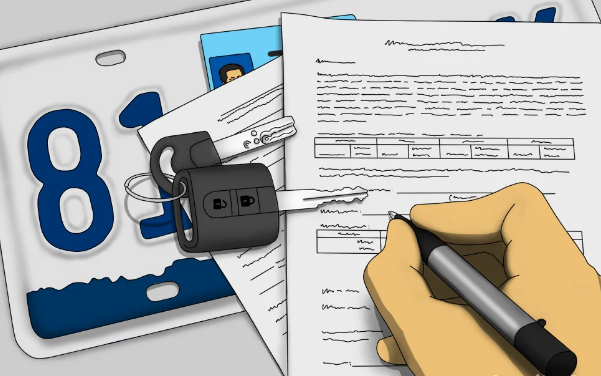Buying or selling a car is exciting, but the paperwork can feel overwhelming if you’re not prepared. From transfer of ownership to confirming logbook details, the legal process in Kenya has specific steps every motorist must follow. Handling this efficiently not only saves time but also protects you from fraud, disputes, or costly penalties.
In this guide, we break down the process step by step—so whether you’re buying your first car or upgrading to something bigger, you’ll know exactly what to do.
Step 1: Confirm Vehicle Details Before Purchase
Before you agree on a deal, confirm that the seller is the legal owner of the car. This means checking:
- Logbook (Vehicle Registration Certificate): Ensure the seller’s name matches their ID.
- NTSA TIMS Portal: Use the seller’s ID number or the car’s registration number to verify ownership and confirm that the vehicle is free of outstanding issues such as police markers or unpaid fines.
- Chassis and Engine Numbers: Physically cross-check these with the details on the logbook.
👉 Practical tip: If you’re considering a used car, sites like auto24.co.ke list hundreds of vehicles—including popular options in Kenya such as the Toyota Premio, Mazda Demio, or Subaru Forester—making it easier to compare cars before checking the paperwork.
📌 Related reading: How to Inspect a Used Car Before Buying in Kenya
Step 2: Draft a Sale Agreement
A sale agreement protects both the buyer and the seller. It should include:
- Full names and ID numbers of both parties
- Vehicle details (registration number, chassis, engine, model, year)
- Sale price and payment terms
- Date and signatures of both parties
While not legally mandatory, a signed agreement provides proof of transaction and can be useful in case of disputes.
👉 Practical tip: Always pay through traceable methods such as bank transfer or mobile money. Avoid cash unless you issue a signed receipt.
📌 Further advice: Top Mistakes to Avoid When Buying a Used Car in Kenya
Step 3: Apply for Transfer of Ownership
All ownership transfers in Kenya are now done online through the NTSA TIMS portal. Here’s how it works:
- Seller Initiates Transfer: The seller logs in to their TIMS account, selects “Vehicle Transfer,” and inputs the buyer’s details.
- Buyer Accepts Transfer: The buyer receives a notification and must log in to approve the transfer.
- Payment of Transfer Fees: Fees vary depending on the engine capacity of the car (e.g., smaller cars under 1000cc cost less than larger SUVs).
- Processing & Logbook Update: Once payment is confirmed, NTSA processes the application. A new logbook is issued in the buyer’s name.
👉 Timeframe: It usually takes 7–14 working days to receive the new logbook, although delays can occur.
📌 Related article: Step-by-Step Guide to Using NTSA TIMS in Kenya
Step 4: Clear Outstanding Obligations
Before finalizing the process, confirm:
- Insurance: The buyer must secure a valid insurance cover before driving.
- Pending Loans: If the vehicle had been used as collateral for a loan, the seller must clear it and obtain a “loan clearance” letter from the bank.
- Road Tax (Motor Vehicle Duty): Ensure this is up-to-date, as NTSA records may block transfers if arrears exist.
👉 Practical tip: As a buyer, request a search record from NTSA showing the vehicle’s financial and legal status before parting with money.
📌 Also read: Car Insurance Options in Kenya: What Every Driver Should Know
Step 5: Safely Handover the Vehicle
After confirming that the transfer is in progress and the buyer has insured the vehicle:
- The seller should hand over all keys, service records, and accessories.
- Both parties should keep copies of ID, sale agreement, and proof of transfer for their records.
👉 Practical tip: As a new owner, book a full vehicle inspection soon after the transfer. This ensures the car is roadworthy and gives you a baseline for future maintenance.
📌 Further reading: Essential Car Maintenance Tips for Kenyan Drivers
Why Handling Paperwork Efficiently Matters
Skipping steps or rushing through paperwork can expose you to risks like fraud, penalties, or ownership disputes. By following the right legal process, you protect your investment and ensure peace of mind.
For Kenyan motorists looking to stay updated on regulations, driving tips, and local motoring trends, check out automag.co.ke—your trusted source for news, reviews, and guides. For deeper insights on car technology and mobility developments, autoskenya.com also offers expert analysis tailored for Kenyan drivers.
Final Thoughts
Transferring ownership doesn’t have to be complicated. With careful preparation—checking documents, drafting a proper sale agreement, and completing the NTSA TIMS process—you can handle everything quickly and safely. Whether you’re buying your first compact car or upgrading to a family SUV, a little attention to paperwork will save you stress in the long run.
To explore cars currently available in Kenya, including popular used models suited for local conditions, visit auto24.co.ke.




